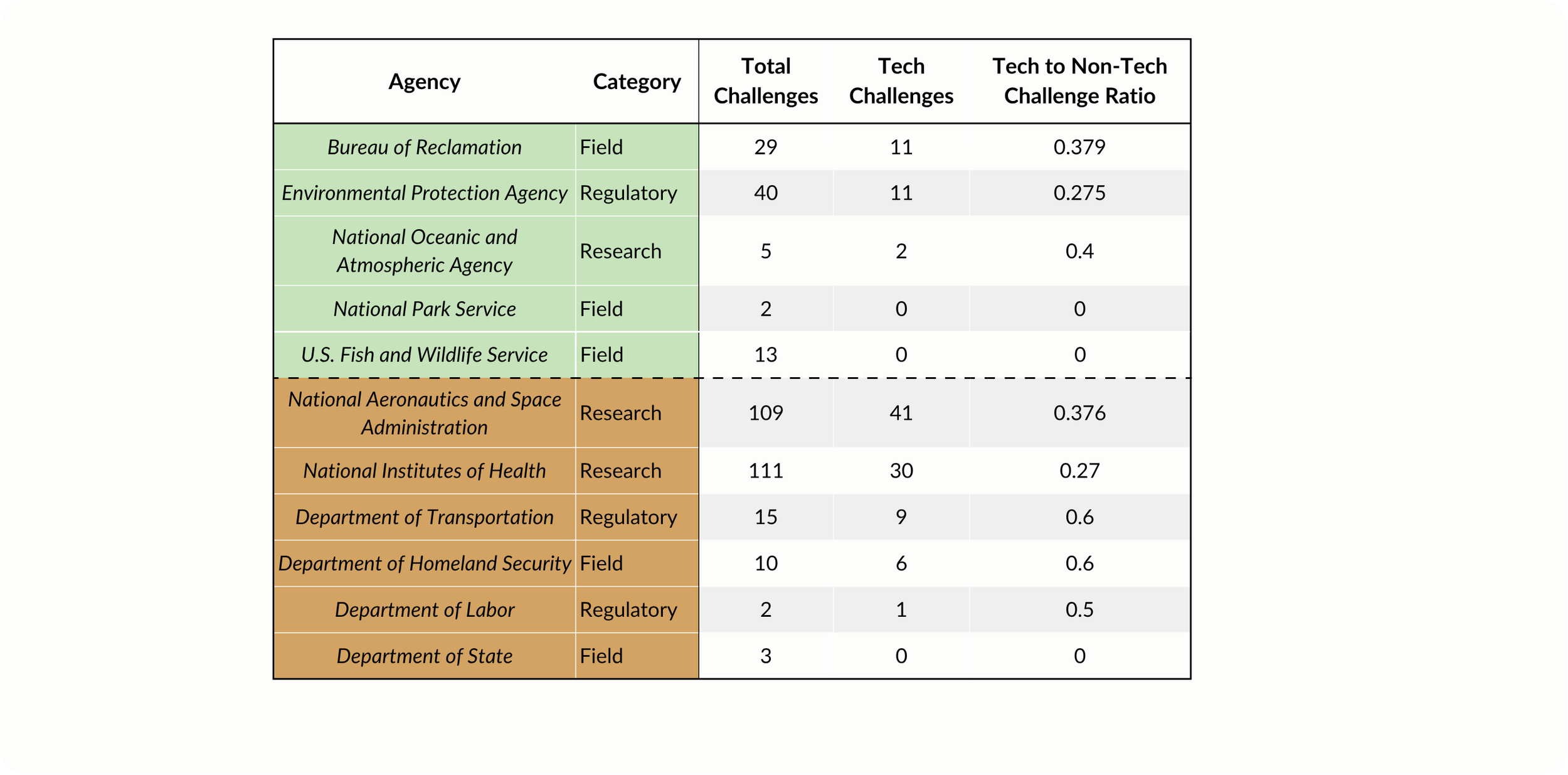Challenges and Prize Competitions
Challenges are explicitly a catalyst for innovative public-private partnership; evaluating their use assesses the extent to which agencies are prioritizing innovative opportunities over easy familiarity.
Key Insights
Over the observed period, the benchmark agencies offered 3.5 times as many tech challenges as the environmental agencies.
Environmental agencies offered 1 technology challenge in the first half of 2025, down from 2.5 per agency in 2021.
As we’ve seen in other indicators, Field agencies are lagging behind on technology challenges, with the exception of the Bureau of Reclamation, which leads all environmental agencies with 11 technology challenges offered in this window.
The most striking difference between benchmark and environmental agencies is among Research agencies. NASA and NIH offered 69 technology challenges between them, NOAA offered 2 and USGS none.
-
Ideas for innovative technology can originate anywhere, but too often administrative barriers associated with contracting prevent matchmaking between innovators and government. Federal challenges are one way to balance the scales and give startup innovators an entrypoint. Challenges (or, prize competitions) have been shaping our world since the 1700s. More nimble than traditional government contracting, challenges are open to everyone and have low barriers to entry. They encourage healthy competition among diverse problem-solvers tailoring solutions for acute issues environmental agencies are addressing.
-
“Where competition delivers innovation for the public good” is the motto of challenge.gov. Challenges are explicitly a catalyst for innovative public-private partnership. By observing how frequently - and at what scale - agencies deploy challenges relative to traditional contracts, we can assess the extent to which they are prioritizing innovation over familiarity. Beyond the literal measures in dollars and cents, extensive use of challenges signals an organization that is comfortable with agile, grassroots, and non-traditional pursuits of problem-solving, all excellent signs of an innovative culture
Environmental Agencies Underutilize Technology Challenges*^
The Why
Environmental agencies are underutilizing challenges across the board and increasingly so as time goes on. Underutilizing challenges may indicate that an agency is uncomfortable with the process, uneasy about collaborating with untested partners, or unable to frame their needs effectively. Eschewing challenges is a symptom of root issues like these that impact a much broader swath of innovative behaviors. Beyond their primary value driving outcomes, leaning into challenges can help teams:
Transform complex scientific and environmental challenges into broadly consumable problem definitions.
Gain exposure to and engage with new partners, modes of thinking, and technological possibilities.
The How
Exploring the resources available at Challenge.gov for implementing challenges.
Soliciting advice from or joining the Challenge and Prize community of practice.
Designating a Challenge Lead to help managers brainstorm, plan, and execute prize competitions.
*Statistics include Challenges posted from 2016 to 2024. Please see the methodology section below for challenge categorization.
^To maintain consistency, challenges offered at the Department level without an associated subagency were dropped from the dataset.


